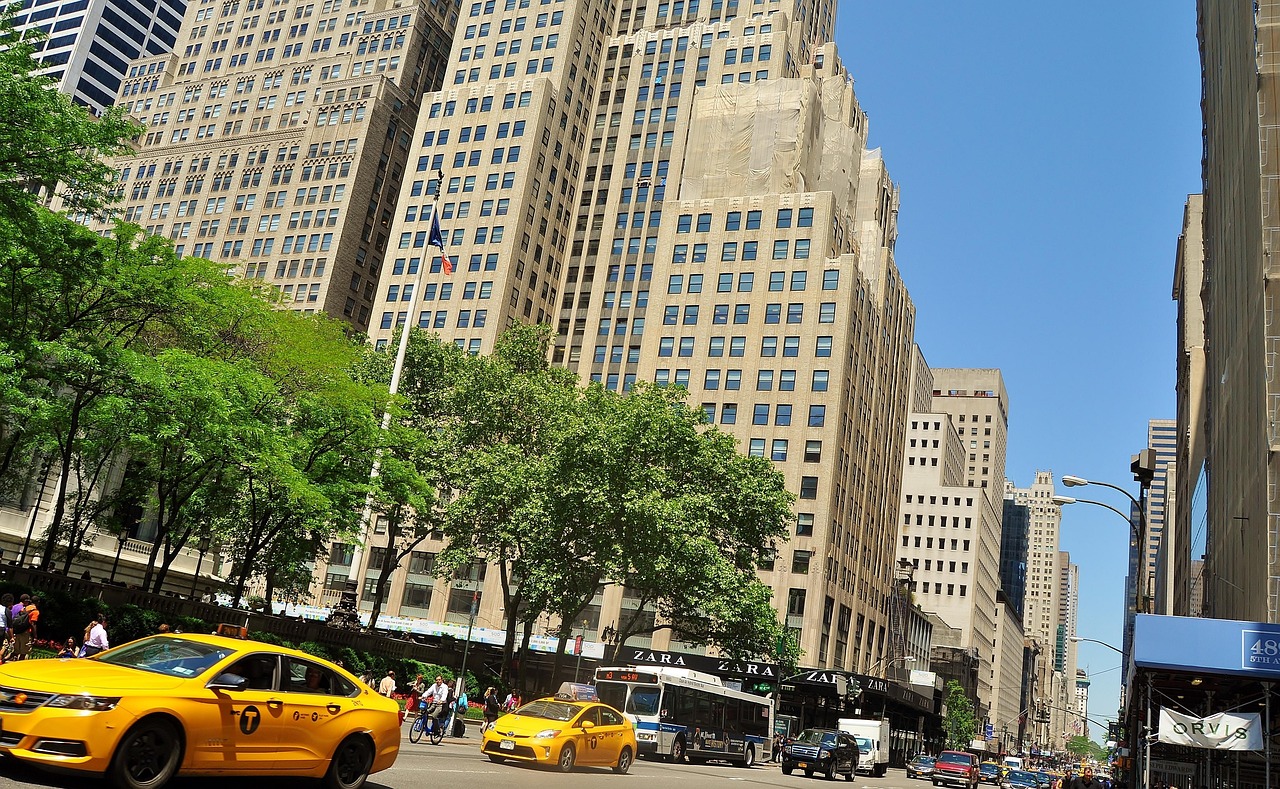Whether it is a country or a city, the most important criterion for judging whether it is livable is the public security situation. After all, safety comes first. As one of the most livable countries in the world, Canada has always had a good public security environment compared to the vast majority of countries. This blog will introduce the top 10 safest cities in Canada, if you are planning to visit Canada and want to have a better understanding of safe cities in the country! If you want to know which cities are considered safe, with low crime severity index, low crime rates, efficient policing, and good community environments, keep reading.
Criteria for Safest Cities in Canada
The Crime Severity Index (CSI) is indeed a valuable criterion for assessing the safety of cities in Canada, cities with lower CSI scores are generally considered safer, as they experience fewer serious crimes. It’s essential to examine the Crime Severity Index (CSI) rather than just the crime rate, as the CSI not only measures the volume of crime but also the severity of different offenses. Here’s a breakdown of its significance and how it works:
Comprehensive Perspective:
- When searching for the safest cities in Canada, the CSI provides a deeper insight into crime by not just counting incidents but also evaluating the severity of those crimes. This helps in understanding the overall safety of a city.
Weighted Crimes:
- It assigns a “weight” to each offense based on its seriousness, which is determined by the sentences handed down by Canadian courts. Serious crimes that are more likely to result in a prison sentence receive a higher weight. For example, a murder has a weight many times higher than a minor theft, and thus a larger impact on the overall CSI.
Comparison with Crime Rate:
- Factors contributing to the safest cities in Canada include proactive crime prevention, which is reflected in the nuanced picture provided by the Crime Severity Index (CSI). Unlike the crime rate, the CSI assigns a higher weight to severe offenses like armed robbery and homicide than to minor ones like petty theft. For example, a city might have a high number of minor offenses but a low CSI if serious crimes are rare, indicating a fundamentally safer environment.
Annual Updates:
- The CSI is updated yearly, ensuring it reflects current trends in crime severity. The weights for various crimes are revised every five years, informed by the Integrated Criminal Courts Survey (ICCS), which keeps the index relevant. Quebec City, Ottawa, and Barrie are some of the safest cities in Canada, all have low CSI in recent years.
Categories of Crime:
- The CSI is divided into:
- Violent Crime Severity Index: Includes serious offenses like assault and robbery.
- Non-Violent Crime Severity Index: Covers less severe crimes, such as drug offenses and property crimes.
- The CSI is divided into:
Overall, the CSI is a crucial tool for evaluating the safest cities in Canada. It not only highlights the volume of crime but also provides important context regarding the severity of those crimes, making it an effective metric for assessing urban safety.
Safest Cities in Canada
Quebec City, Quebec

- Crime Severity Index (CSI): 52.9
- Population: 549,459
- Median Home Price: $460,000
- Average Rent for 1 Bedroom: $1,436
Quebec City is one of the safest cities in Canada, with a very low crime severity index. The CSI of this city is 52.9, which means it is a very safe place, experiencing a level of crime significantly lower than the national average. A CSI of 52.9 is significantly lower than the national Canadian average, which was 80.5 in 2023. This indicates that the city has a relatively low volume of crime and also a lower severity of crime compared to other areas in Canada. This is attributed to good policing, which has resolved 60% of violent crimes. People in Quebec City feel safe, with 77% of them saying they feel comfortable walking alone at night.
Barrie, Ontario
- Crime Severity Index (CSI): 48.1
- Population: 154,676
- Median Home Price: $793,000
- Average Rent for 1 Bedroom: $2,010
Barrie is often listed among the safest cities in Canada to live, attracting families and retirees alike. Barrie generally has a lower crime rate compared to larger cities, but it’s always wise to research specific neighborhoods to ensure you feel secure in your new home. Except for safety, there are some important factors to consider before you make the move to Barrie, Ontario.
Barrie is recognized as one of Ontario’s fastest-growing cities, and this growth brings both advantages and challenges. While Barrie has been more affordable than Toronto, housing prices have been rising due to increased demand. It’s crucial to assess the current real estate market to determine if it aligns with your budget. The winters in Barrie can be harsh, with significant snowfall and cold temperatures. Finally, the lifestyle in Barrie offers a mix of urban amenities and outdoor activities, thanks to its beautiful waterfront and proximity to nature. Whether you’re looking for recreational opportunities or a family-friendly environment, Barrie has much to offer.
Victoria, British Columbia
- Crime Severity Index (CSI): 41.3
- Population: ~400,000 (Greater Victoria)
- Median Home Price: ~AU$1,000,000
- Average Rent for 1 Bedroom: ~AU$1,800/month
- Famous Universities: University of Victoria, Royal Roads University
The scenic beauty of Victoria complements its status as one of the safest cities to live in Canada. With a CSI of 41.3, the city focuses on preventing property crimes, which are the most common type of crime. The police work closely with local organizations to address criminal issues and maintain community safety. These community-centered efforts help maintain a low crime rate and make Victoria a safe place for its residents.
Victoria boasts the sunniest climate of any major city in British Columbia, so you’ll be able take part in a lot of outdoor activities. You can live close to Victoria’s beautiful beaches! James Bay, Oak Bay, Downtown Victoria, and Fernwood are some popular areas to move in. James Bay is proximity to downtown and waterfront amenities, Oak Bay offers a quieter, upscale, family-friendly vibe, and Downtown Victoria boasts a lively atmosphere with shops, restaurants, and cultural attractions, which is perfect for those who enjoy urban living. Fernwood is renowned for its artistic vibe and community spirit, offers a mix of residential options, from character homes to modern condos.
Ottawa, Ontario
- Crime Severity Index (CSI): 31.3
- Population: ~1,000,000
- Median Home Price: ~AU$500,000
- Average Rent for 1 Bedroom: ~AU$1,600/month
- Famous Universities: University of Ottawa, Carleton University
Ottawa consistently ranks as one of the safest cities in Ontario Canada, thanks to its effective policing strategies. The crime index in Ottawa, the capital of Canada, is 31.3. The city is renowned for having a reliable police force and effective law enforcement. As the national capital, Ottawa has received continuous investment in security projects such as policing, emergency services and crime prevention initiatives. These efforts have kept the crime level low, making it a safe place to live.
In Ottawa, approximately 70% of properties are residential, with 60% being single-family homes and the remainder apartments. Renting a shared space can provide more affordable options, but typically involves shared bathrooms. Property prices vary by neighborhood, and the farther you are from downtown, the lower the cost. Popular areas include Centretown, The Glebe, and Hintonburg for urban living, while Riverside South and Kanata offer options for families. Ottawa is known for its safety and vibrant community events, such as Canada Day celebrations, the Ottawa Jazz Festival, and Winterlude, give you lots of oppotunities to integrate into local life.
Halifax, Nova Scotia
- Crime Severity Index (CSI): 76.5
- Population: ~450,000
- Median Home Price: ~AU$400,000
- Average Rent for 1 Bedroom: ~AU$1,500/month
- Famous Universities: Dalhousie University, Saint Mary’s University, Mount Saint Vincent University
As one of the safest cities in Canada, Halifax has vibrant local economies that contribute to overall community well-being. Some people move in the city for its growing job market. Working in Halifax, Nova Scotia offers promising opportunities across tech, healthcare, and government sectors. Major tech employers include IBM, which has a significant delivery centre, Lockheed Martin (aerospace and defence), and Salesforce. The Ocean Supercluster, a federal innovation initiative, is headquartered in Halifax.
As of September 2025, the average home price in Halifax, Nova Scotia, was approximately $579,602, compared to over $1.1 million in Toronto and $1.2 million in Vancouver. Halifax’s housing is more affordable than big cities. For tourist resources the city offers, the Halifax Citadel National Historic Site is the city’s most visited landmark. The Maritime Museum of the Atlantic houses exhibits on the Titanic and the 1917 Halifax Explosion. Point Pleasant Park is a 75-hectare wooded park minutes from downtown. The Salt Marsh Trail, part of the Trans Canada Trail system, is a popular coastal walking path. In conclusion, Halifax is one of Canada’s top mid-sized cities for families, professionals, and newcomers. It offers a strong job market, coastal lifestyle, and more affordable real estate compared to larger cities.
St. Catharines-Niagara, Ontario
- Crime Severity Index (CSI): 54.47
- Population: ~400,000 (Niagara Region)
- Median Home Price: ~AU$500,000
- Average Rent for 1 Bedroom: ~AU$1,300/month
- Famous Universities: Brock University
Calgary, Alberta

- Crime Severity Index (CSI): 63.3
- Population: ~1,300,000
- Median Home Price: ~AU$600,000
- Average Rent for 1 Bedroom: ~AU$1,500/month
- Famous Universities: University of Calgary, Mount Royal University, St. Mary’s University Calgary
Cities like Calgary are celebrated for being among the safest cities in Canada while also offering urban amenities. While larger, it maintains relatively low crime rates compared to other major cities, with community-focused policing. Nestled near the Rockies, Calgary is not only scenic but also one of Canada’s safest and most livable cities. Ranked 3rd globally for livability, it excels in stability, culture, and environment. The city is more affordable for homebuyers and renters. For example, to rent a one bedroom apartment in the city center, it would cost $2,353 in Toronto versus $1,600 in Calgary.
Outdoor enthusiasts thrive here. Calgary boasts North America’s most extensive pathway network, perfect for cycling and walking, plus massive parks and WinSport’s year-round adventures. The city is home to universites like Mount Royal University and the University of Calgary, with a large number of young, diverse population there, it’s easy to find lots of student-focused activities, sports and nightlife.
Waterloo, Ontario
- Crime Severity Index (CSI): 45.0
- Population: ~130,000
- Median Home Price: ~AU$700,000
- Average Rent for 1 Bedroom: ~AU$1,400/month
- Famous Universities: University of Waterloo
The safest cities to live in Canada often have high levels of educational attainment among their populations. According to the Waterloo Region Community Profile, 35.2% of residents had a bachelor’s degree or higher. This is a significantly higher percentage than the national average in Canada. The region is home to several major institutions, including the University of Waterloo, Wilfrid Laurier University, and Conestoga College. The University of Waterloo, in particular, is highly regarded for its STEM programs and is sometimes called the “MIT of Canada”. Crime rate is not worth mentioning as it is barely there, minor infractions, usually, if you hear of anything. Waterloo is a very safe place to reside.
Besides, Waterloo offers a compelling, affordable alternative to Toronto. Key savings are clear in housing: the average one-bedroom rent is $1,700 versus Toronto’s $2,300. Overall consumer prices, including rent, are 20% lower. Living in Waterloo, commuting is more efficient. The Ion light rail connects the region, avoiding Toronto’s notorious congestion. Culturally, Waterloo is a vibrant hub anchored by two major universities and hosts Canada’s largest Oktoberfest. While smaller than Toronto, its community-focused arts scene and major performances at venues like Centre in the Square provide a rich lifestyle without the big-city intensity.
London, Ontario
- Crime Severity Index (CSI): 62.0
- Population: ~400,000
- Median Home Price: ~AU$450,000
- Average Rent for 1 Bedroom: ~AU$1,200/month
- Famous Universities: Western University, Fanshawe College
London is one of the safest cities in Canada to live, offering a strong sense of community and effective law enforcement, resulting in a low crime severity index. If you are looking for some cities that perfectly balance the feel of a small town with an active lifestyle that’s similar to larger urbanizations, London, Ontario is the best choice.
Located in southwestern Ontario, London offers an attractive urban alternative with significant financial benefits. While maintaining access to major cities like Toronto and Detroit, its real estate is far more affordable, the average home price is approximately $622,000, roughly half the cost of Toronto.
The city provides robust amenities, including collaboration between law enforcement and community organizations strengthens safety, and strong healthcare anchored by Western University and London Health Sciences Centre. However, the job market remains competitive, potentially challenging for some professionals. With its diverse population, innovative initiatives like the London Innovation Challenge, and proximity to Lake Erie, Huron beaches, London balances urban convenience with community atmosphere. The city’s public transportation network and cultural facilities like parks and recreation programs further enhance livability.
Nanaimo, British Columbia
- Crime Severity Index (CSI): 80.0
- Population: ~100,000
- Median Home Price: ~AU$600,000
- Average Rent for 1 Bedroom: ~AU$1,500/month
- Famous Universities: Vancouver Island University
Many residents of the safest cities in Canada report feeling secure in their neighborhoods. Nanaimo is noted for its safety and community programs that foster a secure living environment. There are safe neighborhoods in Nanaimo, with Hammond Bay being frequently recommended, which is especially for families and retirees, Hammond Bay area has many attractive neighborhoods, waterfront properties, parks, and schools. Other neighborhoods like Cinnabar Valley Extension and North Jinglepot are also mentioned as being good options for those seeking a quieter environment.
How to Find Housing in Safest Cities in Canada?
Finding a home in Canada is about more than four walls, it’s about securing a lifestyle in a community that is safe, convenient, and enriching. At uhomes.com, we specialize in connecting you with a vast selection of student housing in Canada‘s safest and most desirable cities. Our extensive portfolio is carefully curated to feature homes in neighborhoods known for their low crime rates and family-friendly atmospheres, ensuring your peace of mind is the top priority.
Beyond safety, we understand the importance of location. That’s why so many of our listings are situated within close proximity to top-ranking universities and colleges, making student life seamless and stress-free. Furthermore, our properties put you right in the heart of vibrant communities, with easy access to essential amenities like shopping centers, parks, cafes, and public transit. With uhomes.com, you don’t have to choose between safety, convenience, and a great lifestyle. Let us help you find a home where you can thrive.
Common Crime Trends in Canada
The overall picture is nuanced: Canada remains a very safe country by global standards, but it is experiencing some concerning shifts. It should be mentioned that your safety in Canada will depend much more on your specific city, neighborhood, and personal habits than on the national crime statistics. Here are some common crime happening more frequently in some categories.
- Surge in Cyber-Crime and Fraud: This is one of the fastest-growing categories. Fraud, particularly online and phone scams, has exploded. This includes identity theft, phishing emails, and service scams, which have seen an increase of over 46% in the last decade.
- Increase in Youth-Related Crime: The youth crime severity index has risen for several consecutive years. It’s important to note this is largely driven by a significant increase in non-violent property crimes, such as car theft, break-ins, and shoplifting.
- Violent Crime & Gang Activity: The Violent Crime Severity Index has also risen. Much of this increase is linked to organized crime and gang activity, which often leads to targeted violence. While this impacts overall statistics, it does not typically affect the general public randomly.
- Growth in Property Crime: After a long period of decline, property crime is on the rise again. This includes:
- Shoplifting: A significant and visible problem for retailers.
- Vehicle Theft: Especially in major hubs like Ontario, there has been a dramatic spike in organized vehicle theft for export.
Final Thoughts: Safest Cities in Canada
Your journey to a new home should begin with confidence and peace of mind. Canada offers numerous safe, welcoming communities, from Quebec City’s historic streets to Victoria’s coastal beauty and Ottawa’s stable urban environment. While statistics guide us, your perfect safe haven also depends on your personal needs and aspirations.
Let this guide be your first step. We encourage you to explore these cities further and remember safety exists within neighborhoods, not just city limits. Browse uhomes.com, you are well-equipped to make an informed decision and find a Canadian home where you can truly thrive with confidence and peace of mind.
Frequently Asked Questions (FAQ)
What are the safest cities in Canada?
Quebec City consistently ranks as one of the safest cities in Canada, with a high safety index. Ottawa, Calgary, St. Catharines, Barrie, Halifax and Victoria also have strong safety ratings, making them great options for families and professionals.
Which is the best city in Canada to live in for foreigners?
The “best” city for foreigners is the one that fits your personal budget, career, and lifestyle dreams. Here are some popular cities in Canada attract lots of foreigners to move in:
For the best job opportunities & big-city life: Choose Toronto or Vancouver. Be ready for high costs, especially for housing.
For a European feel & vibrant culture: Choose Montreal. Learning some French will make your experience much better.
For a strong job market with lower costs: Choose Calgary or Edmonton. You get good salaries and more affordable living, especially in Edmonton.
For a quieter, very safe, and government-focused city: Choose Ottawa.
For a tech career in a smaller, youthful city: Choose the Waterloo Region.
For a relaxed coastal lifestyle: Choose Halifax or Victoria.
What is the cheapest and safest place to live in Canada?
For a combination of low living costs and a high safety rating, Quebec City, Quebec is a top contender. It has lower CSI while offering urban amenities at a much more affordable price than larger metropolitan areas. Similarly, Sherbrooke, Quebec, provides a safe, vibrant, and budget-friendly environment with a strong student presence.
In the Maritimes, Charlottetown, Prince Edward Island, offers a very safe, community-oriented lifestyle with a manageable cost of living. Meanwhile, Halifax, Nova Scotia presents a growing economy with a coastal lifestyle that remains more affordable and generally safer than many larger Canadian cities.
It is important to note that some traditionally affordable prairie cities, like Winnipeg, Regina, and Saskatoon, do have higher crime rates, making them less ideal for those prioritizing safety above all else. For the optimal balance, focusing on specific cities in Quebec and Atlantic Canada is a reliable strategy.
What are the most unsafe cities in Canada?
Based on the most recent data from Statistics Canada, the Canadian city with the highest Crime Severity Index (CSI) is Winnipeg, Manitoba. Other cities with high CSIs include Lethbridge (Alberta), Saskatoon (Saskatchewan), and Regina (Saskatchewan). Among larger cities, Edmonton and Vancouver also have CSIs above the national average. Surrey, B.C., leads Canada’s 2025 crime index at 64.7. Winnipeg records the country’s highest violent crime rate. Vancouver’s DTES remains Canada’s most concentrated crime zone. Ottawa’s ByWard Market and Lower Town face triple the city average in violent incidents.
Is Canada a safe place to live?
Yes, Canada remains a very safe country to live in. While minor property crime has caused a slight recent uptick in some cities, its violent crime rate is low and stable, and it consistently ranks among the world’s safest nations.








